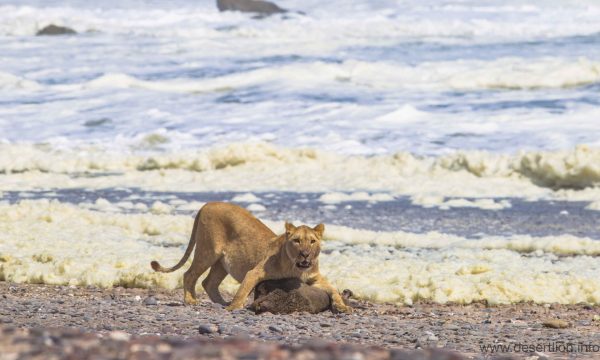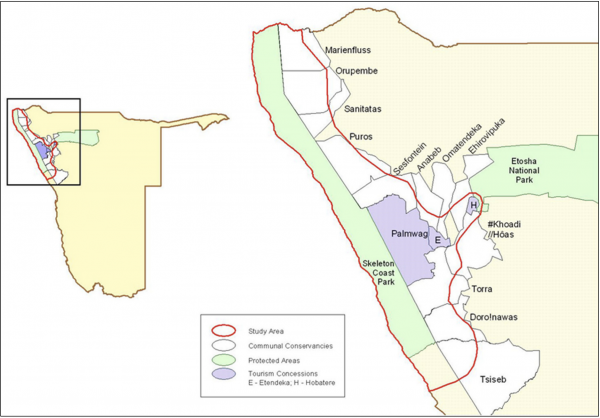
on a marine diet in the Skeleton Coast National Park,
Namibia. Namibian Journal of Environment 3 A: 1-10.
Lions prey on marine diet in the Skeleton Coast National Park, Nambia.
The Skeleton Coast National Park in the northwest of Namibia supports a small population of African lions that have adapted to the harsh extremely dry conditions. After a long period of human-lion conflict during the 1980s lions disappeared from the Skeleton Coast for more than a decade. Due to the development of communal conservancies and the growth of tourism in the area, lion populations started to recover along the Skeleton Coast
in 2002.

Image courtesy ofStander PE (2019) Lions (Panthera leo) specialising
on a marine diet in the Skeleton Coast National Park,
Namibia. Namibian Journal of Environment 3 A: 1-10.
It took another 15 years for the lions to rediscover the rich marine food resources that their predecessors relied upon in the 1980s. In 2017 two prides of lions started regularly hunting cormorants and Cape fur seals. Over a period of 18 months, three young lioness of the Hoanib Floodplain pride killed two greater flamingos, 60 cormorants and 18 seals. The marine diet contributed to 79% of their food items and 86% of the biomass the lions consumed during this period.

on a marine diet in the Skeleton Coast National Park,
Namibia. Namibian Journal of Environment 3 A: 1-10.
Preliminary observations of lions investigating and foraging along the intertidal zones suggest they may learn to prey on other marine organisms, like shellfish, crabs or sea turtles. The marine resources along the intertidal zone of the Skeleton Coast provide an important source of energy and nutrients that the lions can rely on when their land prey resources are scarce.